| Miscanthus, sometimes referred
to as Northern Pampas Grass, are notable for their
impressive stature and fluffy plumes that remain
attractive throughout the winter months. There are many
varieties, offering different variegation patterns,
differing heights and different leaf textures.
|
| Miscanthus 'Silberfeider'
('Silver Feather'): Showy plumes atop 8' tall
stems. Plumes start slender and become cloud-like
& fluffy as they mature.
|
.jpg)
|
| Miscanthus 'Strictus' (Porcupine
Grass): Brilliant horizontal yellow bands on wide green
leaf blades. Stiffly upright habit. Miscanthus 'Zebrinus'
(Zebra Grass) has similar variegation but a slightly
more loose & open habit.
|
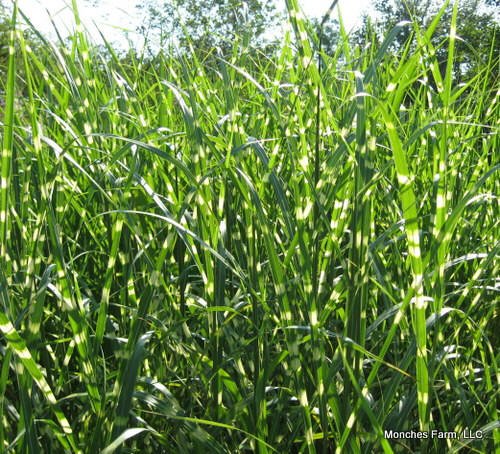
|
| Miscanthus 'Variegatus': Clean
white vertical variegation on each leaf blade.
|

|
| The Panicums (Switch Grasses) are midwest
prairie natives so are perfectly adapted to growing in
our midwestern climate & soils.
|
| Panicum 'Northwind':
Selected right here in Wisconsin for its exceptional
upright habit and lovely airy seedheads.
|

|
| Panicum
'Shenandoah': The first of the red-tipped
perennial grasses to hit the market a number of years
ago. The top 1/3 of each leaf blade turns burgundy by
mid summer. Vase like loose open habit topped with
clouds of light airy seedheads in summer & fall.
|
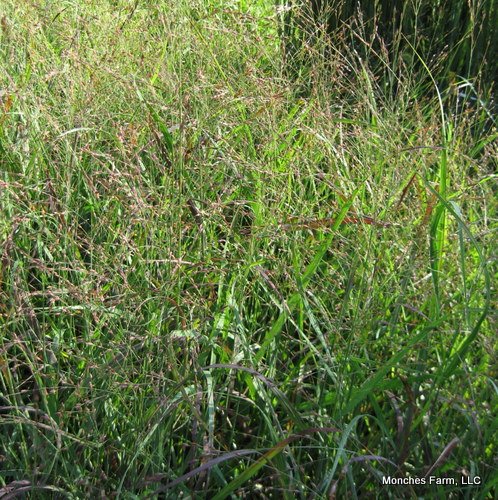
|
| Panicum 'Ruby
Ribbons': A newer introduction with all of the same
characteristics of 'Shenandoah' but a much darker,
richer burgundy color that is present throughout the
growing season.
|
.jpg)
|
| Pennisetum (Fountain Grass) has
a much more mounding habit than the previous grasses
topped by foxtail-like plumes
in autumn.
|
| Pennisetum 'Karley Rose':
Elegantly arched pink colored plumes.
Nancy's Favorite!
|
.jpg)
|
| Pennisetum 'Red Head': Dense,
upright red colored plumes. (limited supply).
|
.jpg)
|
| Calamogrostis ( )
are the workhorses of the ornamental grass world. Their
wide use in municipal and commercial landscapes speaks
to their adaptability, hardiness and long season of
interest.
|
| Calamogrostis
'Karl Foerster': Intensely vertical habit. Slender
plumes that develop in June and remain wheat colored
throughout the growing season and into the winter
months.
|
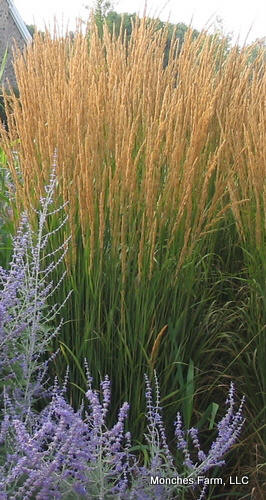
|
| Calamogrostis
'Eldorado': Although there are several white variegated
forms of Calamogrostis ('Overdam' & 'Avalanche') this
bright yellow variegated form is our favorite.
|
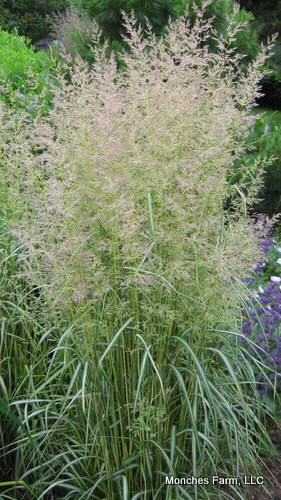
|
| Calamogrostis
brachytricha: Similar in appearance to Pennisetum, this
grass forms a mound adorned with an abundance of
bottlebrush plumes in autumn. Tolerant of partial shade.
|

|
| Schizachryrium (Little
Bluestem) is a Wisconsin prairie native with steel blue
colored foliage that turns russet red in autumn.
Beautiful!
|
| In addition to the
straight species we have a number of cultivars selected
for such characteristics as richer blue foliage color
('The Blues'), more intense fall color ('Blaze') and
shorter stature and more upright habit ('Jazz' & 'Little
Luke').
|

|

|
| Spodiopogon (Frost Grass) is a
mid to large sized grass known for its fall showiness.
|
| Spodiopogon
sibericus comes into its glory in autumn when it turns a
striking burgundy color and bears its upright seedheads
|
.jpg)
|
| Helictotrichon (Blue Oat Grass)
is our grass of choice when a gardener is looking for a
smaller scale blue grass. It is hardy, long lived, heat
tolerant and simply a fantastic garden performer (unlike
the popular, but disappointing, Blue Fescue grasses).
|
| The species,
Helictotrichon sempervirens, is a fantastic plant as is
the cultivar 'Sapphire', selected for its slightly
richer blue color.
|
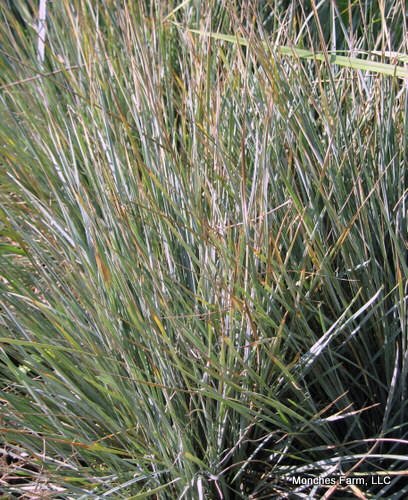
|
| Chasmanthium (Northern Sea
Oats) is notable for being the most shade tolerant of
the larger grasses.
|
| Chasmanthium
latifolium: Attractive green hanging seedheads age to
tan and are extremely popular for dried arrangements.
|
.JPG)
|
| Sasa (Bamboo) gets a bad rap
but there are some species that are very well behaved in
the garden.
|
| Sasa 'Albo Striata':
A dwarf variegated bamboo that forms a low
mass of green & white wide leaf blades. Totally
hardy for us here and very well behaved (we've had it
for years and it does NOT run around). Imparts an
oriental essence. Nice also as a container plant.
|
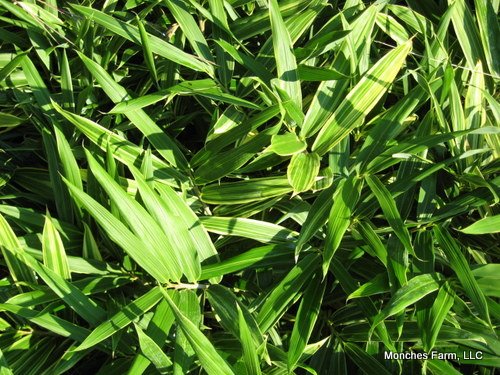
|
| We also have an excellent
selection of SHADE GRASSES!
|
| Hakonechloa
(Japanese Weeping Forest Grass): Graceful weeping habit.
Slow to establish but soooo worth the wait. We carry the
green leaf form as well as the yellow variegated form ('Aureola')
and the pure gold one ('All Gold').
|

|
| Carex 'Ice Dance':
We carry many types of Carex, all of whom thrive in
shade, but this one is among our favorites. Even under
the harsh drought conditions of 2012 it has looked
pristine all season. Very adaptable!
|
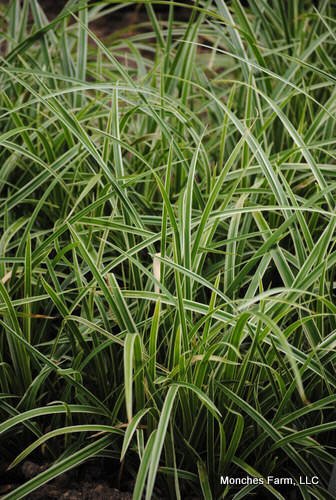
|
AND MANY, MANY MORE...
Come visit!
|



.jpg)




.jpg)
.jpg)
.jpg)




.jpg)

